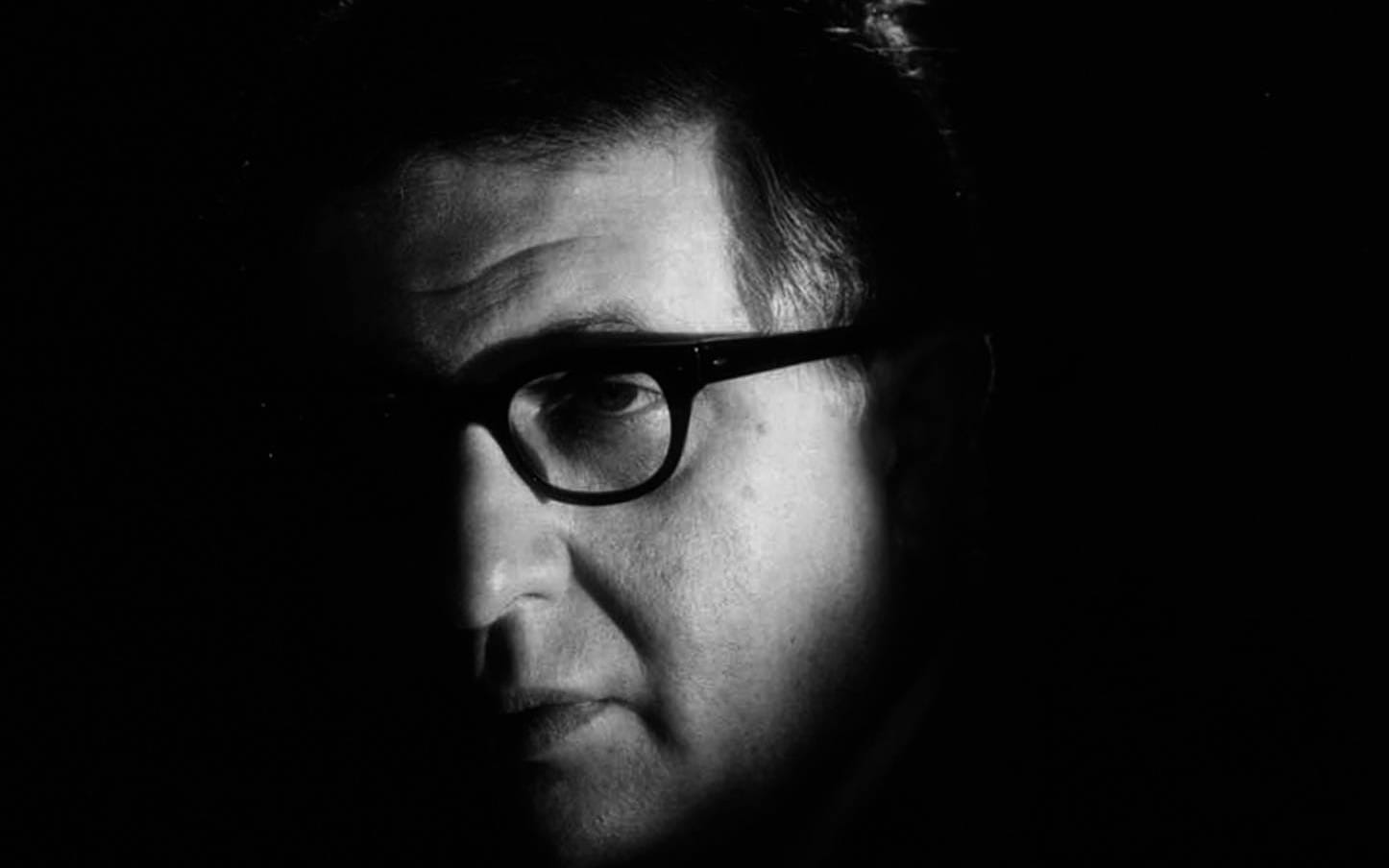When ranking the greatest film score composers of the 20th Century, you'll unanimously see the name 'Bernard Herrmann.'
The famed film composer was born in New York City in 1911 and showed musical aptitude at an early age. Taking up violin at age 9, he formed a string quartet while still in high school. He continued to pursue music after high school, attending New York University and Juilliard. Herrmann was still a student when he debuted as a conductor on Broadway.
Herrmann was just 21 when he was hired as a composer for radio programs at Columbia Broadcasting System (CBS) in 1933. Soon after, he was promoted to the prestigious role of conductor for the CBS Symphony Orchestra.
It was while he was composing for radio dramas that he met ambitious theater actor and director Orson Welles. When Welles broke into cinema by writing, directing, and starring in ‘Citizen Kane’ in 1941, Herrmann was his composer of choice.
It was Herrmann’s first film score, and the first of five Academy Award nominations he’d receive over the years. The Academy passed on giving him the award for ‘Citizen Kane,’ but did bestow his only Oscar that same year for ‘The Devil and Daniel Webster.’
Following this auspicious beginning, Herrmann was a film score force to be reckoned with. He considered himself a classical composer in the flavor of 19th Century Romanticism. More interested in conveying emotions musically than writing catchy songs, he hated being thought of as merely a film composer.
Herrmann strongly felt that every one of his scores should be distinctively tailored to its film. His ability to make the music just as much a character as any actor was one of his strongest points.
With a catalog of almost 50 film scores to his credit, choosing any one of them over another feels unfair… So here are three! From a storied career packed with astonishing successes and famous disagreements, here’s a handpicked look at some of the standout scores that showcase Bernard Herrmann’s innovation, imagination, and legacy.
Three Visionary Movies, Three Groundbreaking Scores, One Composer
The Day the Earth Stood Still
Released in 1951, ‘The Day the Earth Stood Still’ is regarded as among the best films of the 1950s. It was a daring effort that went against the grain, featuring a benevolent alien visiting Earth to turn humanity away from a path of galaxy-threatening nuclear proliferation… Or, if push came to shove, they’d wipe us out themselves for the good of space-faring civilizations everywhere.
Herrmann and the film’s director, Robert Wise, had worked together previously when Wise served as the editor on another of Orson Welles’ films, ‘The Magnificent Ambersons,’ in 1942. Wise knew the irascible composer expected total control when scoring films and left him to it.
By the time he scored ‘The Day the Earth Stood Still,’ Herrmann was already known for bucking decades of cinema music tradition. He focused on creating an intense atmosphere and came up with new ways to communicate the otherworldly events taking place.
Wise couldn’t have been happier with the results when he first heard Herrmann’s revolutionary score.
Largely abandoning the string and woodwind sections, Herrmann instead assembled a motley soundscape comprised of 27 instrumentalists playingorgans, pianos, harps, horns, trumpets, tubas, and a variety of percussion.
Additionally, the score included the early use of electric instruments including guitar, cello, bass, and the first cinematic use of the electric violin.
Perhaps most noteworthy was Herrmann’s use of not just one, but two theremins. As with some of his other instrumentation choices, Herrmann utilized one theremin for high pitches and one for low.
The result is a fascinating, unique score that is still studied to this day not just for its instrumentation, but the many masterful aural techniques Herrmann employed to create something truly out of this world.
Neither filmmakers nor audiences realized at the time how groundbreaking the movie was when it was released. A time capsule of the early 1950s Cold War era, ‘The Day the Earth Stood Still’ was added to the Library of CongressNational Film Registry.
And Bernard Herrmann’s Golden Globe-nominated, experimental, theremin-infused score set the standard for nearly all of the 1950s science fiction film music to come.
Psycho
Certain cinematic music cues are so deeply entrenched in our culture that hearing anything resembling them instantly sets the scene.
One such cue is ‘The Murder’ from ‘Psycho.’
An ensemble of violins shrieking the iconic “Ree! Ree! Ree!” is so much a cultural touchstone that it even appears in children's cartoons… An audience far removed from the cue’s origin.
For most people, famed director Alfred Hitchcock’s 1960 film adaptation of Robert Bloch’s 1959 horror novel is better known than the novel itself. It was Hitchcock’s sixth collaboration with Bernard Herrmann, having recently come off a major hit with 1959’s Academy Award-nominated ‘North by Northwest.’
‘Psycho’ was a departure for Hitchcock, both in artistic choices and budgetary limitations.
Paramount Pictures refused to put its weight behind the film, finding the controversial subject matter in poor taste, expressing concern about industry censorship, and expecting the movie to flop. Hitchcock ultimately financed the film by mortgaging his house… In exchange for 60% of the box office proceeds.Keenly aware of burning through his budget, Hitchcock used the crew from his television series, ‘Alfred Hitchcock Presents,’ instead of a full film crew. His choice of filming in black and white both saved costs and saved face… Hitchcock was concerned that audiences wouldn’t be able to handle realistic-looking blood in its full gory glory.
This pared-down budget also impacted the score.
Known to be controlling down to the smallest detail, Hitchcock knew Herrmann’s score was an investment in the film’s success and gave him free rein… Even though the score Herrmann delivered wasn’t what he asked for.
Hitchcock envisioned a contemporary jazzy be-bop soundtrack, but Herrmann, ever headstrong, was unmoved by the request.
Still, the lower budget presented challenges for the composer. Paying for a full orchestra was out of the question. Already well-known for mixing it up and experimenting, he arrived at a solution that was just as much an artistic choice as a frugal one: strings only.
While Hitchcock struggled to find his own direction on a project that steadily drained his pockets, Herrmann reignited the flame… The director had specified no music whatsoever for the now-infamous shower scene, and yet Herrmann composed what’s arguably the most famous music cue in film history: ‘The Murder.’
Usually reluctant to give neither ground nor credit to collaborators, Hitchcock immediately realized Herrmann alone had saved his movie. In rare form, he readily admitted that his idea of having no score during the shower scene was an “Improper suggestion, my boy, improper suggestion.”
The frenzied, stabbing strings of ‘The Murder’ is just the most famous cue of a score so effective that there is virtually no movie without it. Hitchcock was so thrilled that he doubled the composer’s pay, stating “Thirty-three percent of the effect of ‘Psycho’ was due to the music.” Herrmann, who had grudgingly accepted only half of his usual pay initially, must have felt vindicated.
‘Psycho’ earned $32 million against a budget of $800,000 and was the #2 box office earner of 1960… Much to Paramount’s embarrassment. It was nominated for several Academy Awards, but not for Herrmann’s now-legendary score… And it won none of them. But the legacy of ‘Psycho’ is long-lived indeed. It was added to the National Film Registry and is single-handedly credited with inventing the slasher film genre.
Sadly, Herrmann and Hitchcock’s famously successful collaboration would fall apart during the production of 1966’s ‘Torn Curtain.’ Herrmann later confessed that he believed Hitchcock had become resentful toward how much the music was carrying his films.
Jason and the Argonauts
Fortunately for Herrmann, there was plenty of demand for his work.
He was approached by film producer Charles H. Schneer in 1958, beginning a rich collaboration that spanned four memorable films.
Schneer is best remembered as the producer for nearly all of the legendary special effects wizard Ray Harryhausen’s films. First collaborating in 1953, they’d become renowned for creating family-friendly films with imaginative creatures and monsters. Indeed, the duo’s first three movies featured a gigantic octopus, flying saucers, and a humongous alien, respectively.
As the 1950s drew to a close and flying saucers and giant monsters began waning in popularity, Harryhausen showed Schneer some sketches he drew in 1949 that he’d based on ‘One Thousand and One Nights.’ Schneer was immediately intrigued by the idea of a movie based on Arabian folk tales, setting Harryhausen on the path toward the fantasy films for which he is most well-known.
The result was ‘The 7th Voyage of Sinbad,’ the first of Schneer and Harryhausen’s films for which Bernard Herrmann composed acclaimed scores.
Harryhausen had wanted film score veterans Miklós Rózsa or Max Steiner to score the film, but Schneer sold him on Herrmann’s work. Schneer had grown up listening to Herrmann back when the future film composer was working on radio programs for CBS. He’d wished for an opportunity to finally work with his favorite composer… And he was not disappointed, once he was able to get the temperamental composer to agree.
They were so impressed with the result that Herrmann went on to score their adaptations of the literary classics ‘The Three Worlds of Gulliver’ in 1960 and ‘Mysterious Island’ in 1961.
Their final collaboration was 1963’s ‘Jason and the Argonauts.’
A fantastical interpretation of ancient Greek mythology, Herrmann designed his own orchestra to meet the demands of a very peculiar score.
Whereas ‘Psycho’ was written for strings only, this time he left the strings out almost entirely and featured woodwinds, brass, and percussion. Harps alone represented the string section.
Herrmann went over the top on all of the instruments he used in this score. He tripled or even quadrupled their numbers over those of a typical orchestra, with 28 woodwinds, 24 brass, 26 percussion, and four harps.
The result is a powerful score that achieves drama, atmosphere, and emotive range by pushing its unconventional instrumentation to the limits.
It would have been cacophony in anyone else's hands.
Featuring pitched battles, a terrifying bronze giant, demonic harpies, a 7-headed hydra, and Harryhausen’s legendary climactic fight between Jason’s crew and 7 skeletons, Herrmann puts his orchestra to work creating bombastic themes that brilliantly elevate the action… All without a string section.
‘Jason and the Argonauts’ didn’t create much of a wave when it debuted and wasn’t nominated for any awards… But it has attained legendary status as perhaps Ray Harryhausen’s finest work. Herrmann’s score is rightfully regarded as among his most innovative and original.
The Last Laugh
By the late-1960s, Bernard Herrmann thought his career as a film composer was over. Studios regarded orchestras as “old fashioned” and were increasingly demanding popular music that could sell records to teenagers. In characteristically blunt terms, Herrmann refused to conform… Despite the consequences to his career.
Yet in the 1970s, a new generation of film directors who had grown up with the movies he scored were eager to hire the legend. When the former employers who'd called him “old fashioned” asked him to return, he refused… Laughing as he hung up on them.
Herrmann’s final work was for Martin Scorsese’s ‘Taxi Driver’... An Academy Award-nominated score he finished recording only hours before quietly dying on Christmas Eve, 1975.
His friend and contemporary composer Elmer Bernstein praised Herrmann as “a superb composer who wrote superb music with strong statements … And, if the picture couldn't stand up to that kind of strength, then it would collapse underneath the score.”It’s hard to imagine a better eulogy for one of the most talented and influential film composers of all time.







Comments